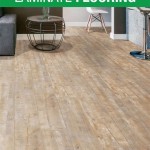Installing vinyl plank flooring on concrete is a great way to create a stylish, durable, and low-maintenance floor. To ensure the flooring is properly installed, it’s important to use the right underlayment to help protect the floor and make it last. In this article, we’ll discuss the different types of underlayment available and how they can help when installing vinyl plank flooring on concrete.
What Is Underlayment?
Underlayment is a thin sheet of material that is placed between the subfloor and the finished flooring. It helps provide a level surface for the vinyl plank flooring and also helps reduce sound, absorb shock, and protect against moisture. There are a variety of underlayment options available, so it’s important to choose the right one for your project.
Types of Underlayment
There are several types of underlayment available for use with vinyl plank flooring on concrete:
- Foam Underlayment – Foam underlayment is designed to provide cushion and sound absorption. It also helps keep the vinyl plank flooring in place and prevents shifting.
- Vinyl Underlayment – Vinyl underlayment is designed to provide a moisture barrier between the concrete and the vinyl planks. It also helps protect against mold and mildew growth.
- Cork Underlayment – Cork underlayment helps provide insulation and sound absorption. It is also a great option for reducing impact noise.
Benefits of Underlayment
The benefits of using underlayment when installing vinyl plank flooring on concrete include:
- Provides a level surface for the vinyl planks.
- Helps reduce sound and absorbs shock.
- Protects against moisture.
- Helps keep the vinyl plank flooring in place and prevents shifting.
- Helps prevent mold and mildew growth.
- Provides insulation and sound absorption.
- Reduces impact noise.
Installation Tips
When installing vinyl plank flooring on concrete, it’s important to follow these steps:
- Clean the concrete surface thoroughly and make sure it is dry and free of dust or debris.
- Install the underlayment according to the manufacturer’s instructions.
- Apply adhesive to the concrete surface and lay the vinyl plank flooring in place.
- Use a roller to ensure the planks are firmly in place.
- Trim off any excess vinyl plank flooring with a utility knife.
- Allow the floor to cure for 24 hours before walking on it.
Conclusion
Installing vinyl plank flooring on concrete is a great way to create a stylish and durable floor. To ensure the flooring is properly installed, it’s important to use the right underlayment to help protect the floor and make it last. There are a variety of underlayment options available, so it’s important to choose the right one for your project. Following the steps outlined above and using the right underlayment can help ensure your vinyl plank flooring will last for years to come.
/laminate-flooring-underlayment-1314969-hero-3894e0b403fb4e59a87a076e3da9914f.jpg)














Related Posts








